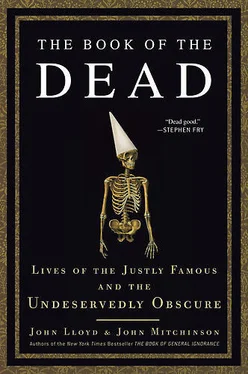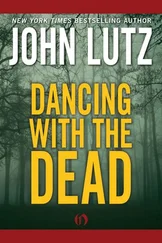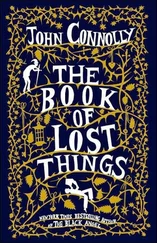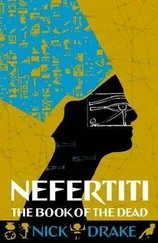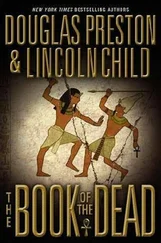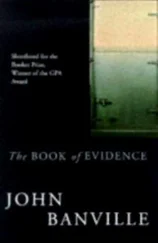Among the direct descendants of the American naval officer and polar explorer Rear Admiral Robert E. Peary(1856–1920) are Peary S. Fowler, a female county circuit judge in Florida, and several Inuit.
Robert Peary believed it was his preordained destiny to be the first man to reach the North Pole. He talked about the Arctic as though it were his own private property, treating other expeditions as infringements and becoming visibly upset when it was pointed out that he was retracing the routes of previous explorers. With astonishing willpower, superhuman powers of endurance, and a fanatical ability to ignore pain, he made eight separate attempts to reach the Pole in ten years, losing all but two of his toes to frostbite.
Peary decided from an early age that he wanted to be famous. In his twenties, when he was just beginning his career in the navy, he wrote to his mother: “Remember, mother, I must have fame, and I cannot reconcile myself to years of commonplace drudgery.” Robert’s father died suddenly when he was three, and his mother Mary’s way of coping with the tragedy was to devote her life to her son: protecting him from the world at every turn, not letting him play with other boys, telling him he was too delicate, making him wear a sun bonnet. It was a deep but suffocating bond: His mother went with him everywhere, even on his honeymoon. Robert Peary married Josephine Diebetsch in 1888. At the time, he had made only one short, failed expedition to Greenland, but that was soon to change. In twenty-three years of marriage, they would spend only three of them together. Nonetheless, Jo would be Peary’s rock, remaining his principal encourager, confidante, and public mouthpiece until his death.
In 1891 she went with him on a reconnaissance mission to Greenland, becoming the world’s first nonnative female Arctic explorer. She wrote a surprisingly cheerful journal and the following year gave birth to their first child, Robert Jr. The family lived among the Inuit, and Jo thought her hosts the “queerest, dirtiest-looking individuals” she had ever seen, reminding her “more of monkeys than human beings.” She was tough, unsentimental, and above all, on her husband’s side. Those who crossed the Pearys or let them down were cut off immediately. One young geologist, John Verhoeff, who had put his life savings into the venture, was so traumatized by the way the Pearys treated him that he effectively committed suicide. Disappearing into the snow, alone and against specific instructions, he shouted back to no one in particular: “I hate them! Her and him both!” and shortly afterward fell down a crevasse.
Peary, meanwhile, set off north. He had a hunch that Greenland was an island and, after an incredible journey, sledging a thousand miles in three months, he and his men finally reached open water, naming it Independence Bay. They believed they had found the northernmost point of Greenland and were looking at the Arctic Ocean. In fact, it was what today is called Independence Fjord, an immense inlet on the northeast coast, some 100 miles long by 15 wide. They were still about 125 miles short of where they thought they were. It was an impressive feat all the same. That part of Greenland is still called Peary Land, and Peary had gone much of the way with a broken leg, which was saved with an improvised splint by the expedition’s doctor, Frederick Cook.
Returning a hero to America in 1892, Peary threw himself into a fund-raising tour for an assault on the North Pole. He traveled the length of the country, delivering 165 lectures in 103 days—earning up to $2,000 a night (about $50,000 today). He looked every inch the bluff polar explorer: almost six feet tall with deep blue eyes, a mane of red hair, and a large handlebar mustache. He delivered his lectures in polar furs, on a stage dressed with an elaborate reconstruction of an Inuit camp, accompanied by five huskies trained to howl in unison at the end of his speech.
His public image concealed a touchy and insecure human being. He suffered all his life from a stutter. Opaque and emotionally distant with everyone, he would fly into a rage at the least hint of disloyalty. Though he was capable of being charming when he wanted something—and was always decisive out on the ice—in private he was a brooder, seeing conspiracies on every side. The wrong side of Robert Peary was a cold, dark place to be, and sooner or later everyone found themselves there—even his wife.
In 1898, leaving Jo behind to bring up their two children and manage their precarious finances, Peary returned to live among the Inuit for three years. Photographs of him standing imperiously in his sealskins help explain why he was almost a godlike figure to them. Exercising his droit de seigneur , Peary now chose an Inuit mistress. “The presence of women,” he wrote, “is an absolute necessity to keep men happy.” Aleqasina was a fourteen-year-old girl who had originally come to the house as a cleaner. She was to bear him two sons, Anaakkaq (born 1900) and Kaalipaluk (born 1906). While she was pregnant with the first of these, Jo Peary turned up unexpectedly. She had had no news of her ice-bound husband for several months and was profoundly shocked by what she found. “Had I known how things were I should not have come,” she wrote afterward. Somehow Jo reconciled herself to this unconventional ménage, returning twice more in 1902 and 1903, but her journal shows that she was often very low. In 1906 she wrote in her diary, “The Pole will never thank me for the anxiety and suffering I have endured.”
Peary’s relationship with Aleqasina was similar to his relationship with the Inuit as a whole. His attraction was genuine enough, but he never took the trouble to learn the language properly, still less to understand their culture. He considered them brave and resourceful, he admired them as “anarchistic philosophers,” but he was no more able to make an emotional connection with them than anyone else. He preferred striding around as “Pearyaksoah,” the great white God, dispensing largess and barking orders. “They value life only as does a fox, or a bear; purely by instinct,” he wrote. Their sole contribution would be to help him discover the Pole.
In fact, they did much more than merely help him. The “Peary System” for polar exploration, which he trumpeted as his great technical breakthrough, was nothing more than the application of Inuit survival techniques. Without their local knowledge and the huge numbers of their dogs (most of which died en route), his expeditions would never have happened at all. It is possible that the years he spent snuggled up with Aleqasina, waiting for a set of prosthetic toes to arrive, obsessively planning his next assault on the Pole, were the happiest in his life. But Peary was only really happy behind a sledge.
After he left the Arctic for good in 1909, he never attempted to contact Aleqasina or his two Inuit sons, nor—despite the wealth his fame had brought him—did he ever make any financial provision for them or the people who had served him so faithfully. Though in awe of him and proud of their role in his mighty project, the Inuit of northwest Greenland still remember Peary today as their “Great Tormentor.”
In 1897, in an act of spectacular vandalism, Peary stole the four sacred meteorites they had used for millennia as a source of metal flakes for knives and arrowheads, took them back to New York, and sold them to the American Museum of Natural History for $40,000 (worth more than $1 million today). None of the money found its way back to Greenland. Peary also brought six Inuit back with him, so he could show them off as part of his lecture series. Four of them died almost immediately of pneumonia. Peary cynically faked their burial and sold their physical remains to the museum. The youngest surviving Inuit was an eight-year-old boy called Minik. He was adopted by the family of the museum’s superintendent, William Wallace, and named “Minik Peary Wallace.” Shortly afterward Wallace resigned. It wasn’t until nine years later, as a teenager, that Minik visited the American Museum of Natural History for himself. There he was horrified to be confronted with the sight of his father’s bleached bones in a glass case in the ethnographic department. Minik begged to have the remains returned to him for a ritual burial, but the museum refused. Peary reluctantly agreed to pay for Minik to return home, from where Minik fought a running battle with the museum for the rest of his life. He died in 1918, aged twenty-nine, two years before Peary himself. The skeletons weren’t released and reburied in Greenland until 1993.
Читать дальше
